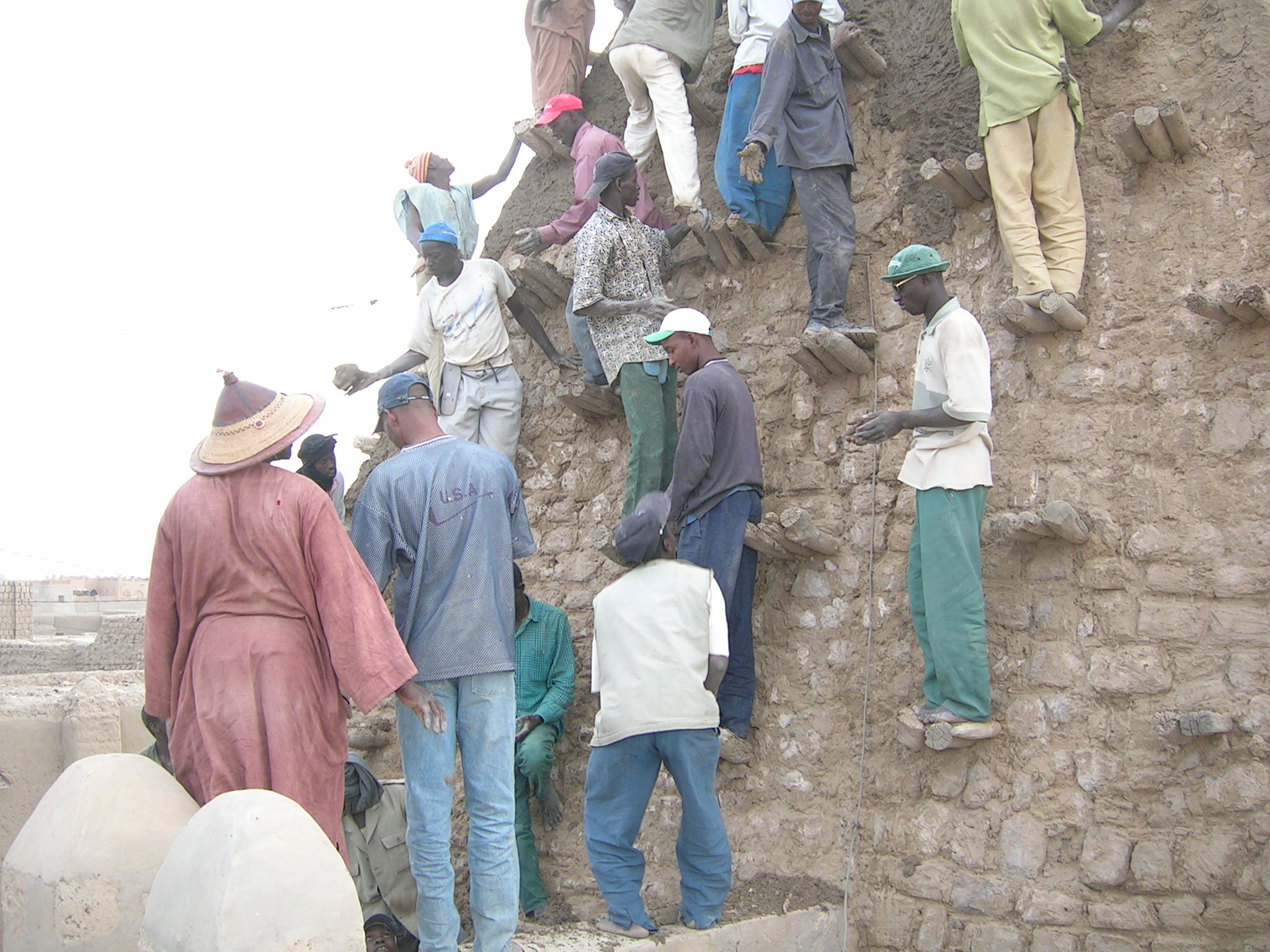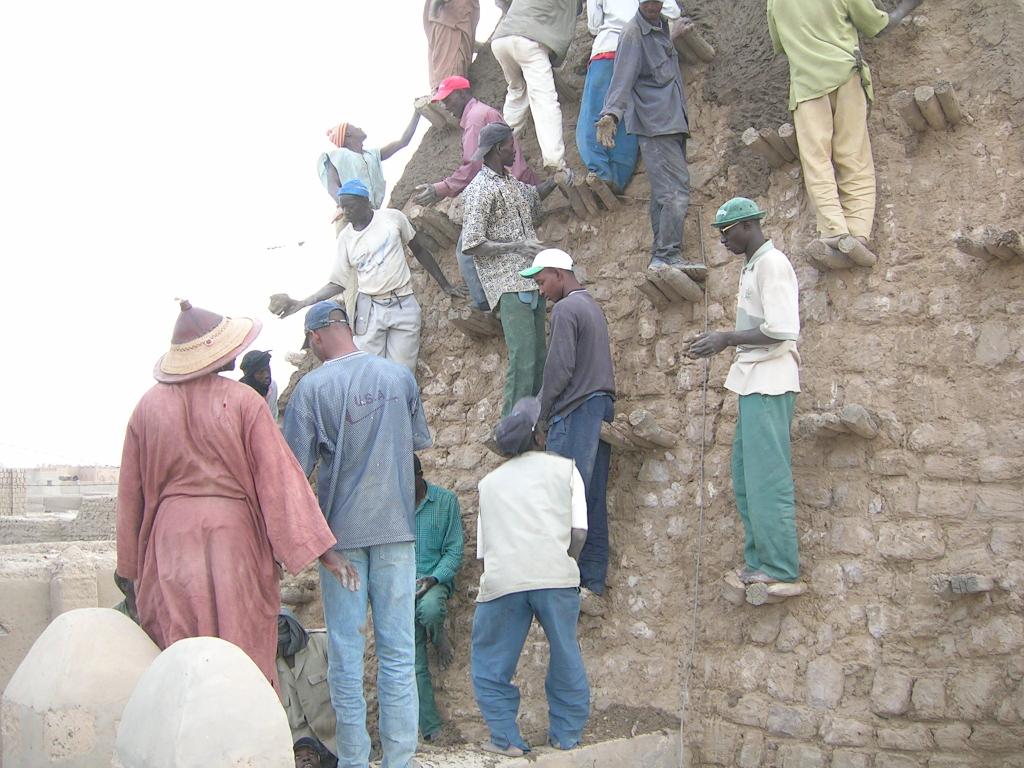Amy Strecker, international cultural heritage law, volgt voor het Leiden-Delft-Erasmus-Centre for Global Heritage de eerste zaak bij het Internationaal Strafhof waar een aanval op cultureel erfgoed de aanklacht is.
On 1 March, the International Criminal Court held a Pre-Trial hearing in the case of Ahmad Al Faqi Al Mahdi. The charges relate to the deliberate targeting and attack of historic and religious monuments during the occupation of Timbuktu in 2012. The judges in the Al Mahdi case now have 60 days to decide whether the trial will go ahead. ‘The importance of this case is that it raises awareness on the international illegality of deliberately destroying cultural heritage and this is indeed an important development’, writes post-doctoral researcher Amy Strecker, who reports on the hearing for the Leiden-Delft-Erasmus Centre for Global Heritage and Development.
By Amy Strecker
On 1 March 2016, the International Criminal Court held a Pre-Trial hearing in the case of Ahmad Al Faqi Al Mahdi. The charges relate to the deliberate targeting and attack of historic and religious monuments during the occupation of Timbuktu in 2012. Not only is this the first time a case is being brought before the ICC dealing with the destruction of cultural heritage, it is also the first time in international criminal law that an attack on cultural heritage is the main grounds for prosecution, aside from the usual scenario where it is just one of the alleged crimes. The aim of the hearing was to assess whether sufficient evidence exists against the defendant for the trial to proceed.
Mr Al Mahdi was allegedly a member of Ansar Eddine and head of the hisbah – the morality brigade – under the occupation of Timbuktu by armed groups (Ansar Eddine and AQMI - Al Qaeda Organisation in the Islamic Maghreb). The prosecution argued that Mr Al Mahdi participated in the planning and organisation of the attack; that he organised a sermon of imams to justify the implementation of the plan, and that he personally partook in the destruction, among other things.
What is interesting about the case is that it is not just about the physical monuments themselves. As stated by the Chief Prosecutor, the attack entailed a “callous assault on the dignity and identity of entire populations and their religion and historical roots.” The attack on the mausoleums and mosques is therefore a symbol of other crimes committed against the population during the occupation. As argued at the hearing, “it is precisely because of what these sites represented that they were targeted and annihilated.” According to oral testimony presented at the hearing, the armed groups made it difficult for the inhabitants of Timbuktu to carry out their traditional practices and interaction with these sites. Other evidence included oral testimony by expert witnesses and local inhabitants, video footage, satellite imagery and UNESCO documentation.

Under the statute of the ICC (Rome Statute) which establishes the Court’s jurisdiction, the destruction of cultural heritage is considered a war crime. According to Article 8 para. 2 of the statute, war crimes include “Intentionally directing attacks against buildings dedicated to religion, education, art, science or charitable purposes, historic monuments, […] provided they are not military objectives” as well as “extensive destruction and appropriation of property, not justified by military necessity and carried out unlawfully and wantonly.” These essentially reiterate provisions of the Hague Conventions and Geneva Conventions dealing with grave breaches and other serious violations of the laws and customs of armed conflict. The fact that Timbuktu benefitted from legal protection under national law and international law further attests to the importance of the site. Timbuktu was inscribed on the World Heritage List in 1988 under criteria 2, 4, 5. It was then placed on the World Heritage in Danger List in June 2012 during the forced occupation.
Another idea behind the current case is that destruction of important cultural heritage is an affront to the values of humanity as a whole. This was clear at the reaction to many similar acts of deliberate destruction, for example, during the war in the former Yugoslavia at the shelling of Dubrovnik and Mostar, at the deliberate destruction of the Buddhas of Bamiyan by the Taliban in 2001 and more recently at the attack on Palmyra and other heritage sites in Syria, Iraq and beyond. If law mirrors the general norms of society, then the increasing recognition by international tribunals in recent years that intentionally destroying cultural heritage is an international crime can only continue. Although very few such cases end up in court, it is important that international criminal law takes this deliberate targeting seriously and follows through with consequences.
Heritage has always been a target in times of conflict and transition, but it is more visible now with social media and international press. It is also being used as a propaganda tool by certain groups to elicit a public response. Prevention of such destruction is a real challenge that involves many stakeholders at many levels, for example through tackling the issue of supply and demand of illicitly trafficked cultural objects (Syria, Iraq), deterrents in the form of cases such as this one, among many other policy solutions.
Exploring ways of dealing with heritage under threat is a priority research area for the Centre for Global Heritage and Development. The importance of a case like this is that it raises awareness on the international illegality of deliberately destroying cultural heritage and this is indeed an important development. The judges in the Al Mahdi case now have 60 days to render a decision as to whether the trial will go ahead. Watch this space…
Amy Strecker is a post-doctoral researcher with the ERC-Synergy Project NEXUS1492 at the Leiden University Faculty of Archaeology. Her research within the project focuses on land rights, cultural heritage and restitution in the indigenous Caribbean. She is one of the researchers in the ‘Heritage under Threat’ team within the Leiden-Delft-Erasmus Centre for Global Heritage and Development.
Personal webpage at Leiden University

